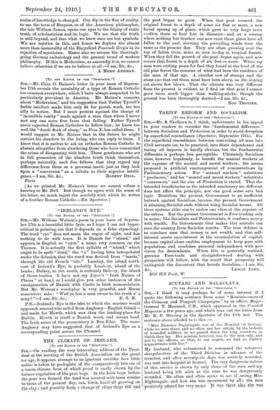"IRELAND'S EYE."
[TO THE EDITOR OF THE "SPECTATOR."] SIR,—Mr. William Watson's poem in your issue of Septem- ber 17th is a beautiful little lyric, so I hope I am not hyper- critical in pointing out that it depends on a false etymology. The word " eye " does not mean the organ of sight, and has nothing to do with tears. It is Danish for " island," and appears in English as " eyot," a name very common on the Thames. It is actually the first syllable of " island," which ought to be spelt " iland," the " s " having been interpolated under the delusion that the word was derived from " insula," through the old French " isle." Lambay, the island north- east of Ireland's Eye, is probably Lamb-ey, island of the lambs ; Dalkey, to the south, is certainly Dalc-ey, the island of thorn-hushes. I have not my Joyce's " Irish Names of Places " at haul, or I could give you other instances of the amalgamation of Danish with Gaelic in Irish nomenclature. But Mr. Watson's word-play is very graceful, and Burns somewhere asks ; " Wad ye hae a man swear to the truth o' a
P.S.—Ireland's Eye is the islet to which the mariner would approach nearest who sailed from Anglesey—English Island— and made for Howth, which was then the landing-place for Dublin. Howth is itself a Danish word, and means head. The Irish name of the promontory is Ben Eder. The name Anglesey may have suggested that of Ireland's Eye as a corresponding point across the Channel.










































 Previous page
Previous page